What are museum display cases made of?
Museum display cases can be made of a variety of materials, depending on the specific needs of the museum and the objects being displayed.
Some common materials used to make museum display cases include:
Glass: This is the most common material used to make museum display cases. It provides an unobstructed view of the objects on display and is durable and easy to clean.
Acrylic: This is a lightweight, shatter-resistant alternative to glass that is often used in museum display cases, particularly for traveling exhibitions.
Wood: Wooden display cases can provide a warm, natural look that complements certain types of exhibits. However, they are generally not used for objects that require airtight or climate-controlled environments.
Metal: Metal display cases can be very durable and provide a sleek, modern look. They are often used for high-security displays.
Plastic: Plastic display cases are lightweight and easy to transport, making them ideal for traveling exhibitions. However, they are not as durable as glass or acrylic and can scratch easily.
Overall, the choice of materials for museum display cases will depend on a variety of factors, including the objects being displayed, the level of security needed, and the aesthetic preferences of the museum.
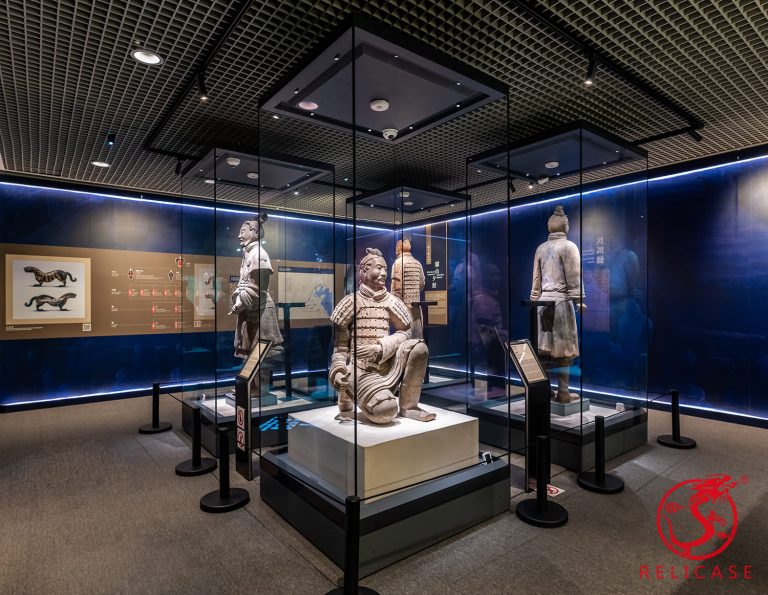
Relicase at Macau Museum: Safeguarding Heritage, Celebrating Legacy
Macau Museum: “Edification of the Masses — Cultural Treasures from the Zhou, Qin, Han, and Tang Dynasties” A Landmark Embraces Innovation The Macau Museum stands proudly atop the historic Mount Fortress, next to the famous Ruins of St. Paul’s. As an iconic symbol of Macau’s history and multicultural heritage, it now embraces the touch of…
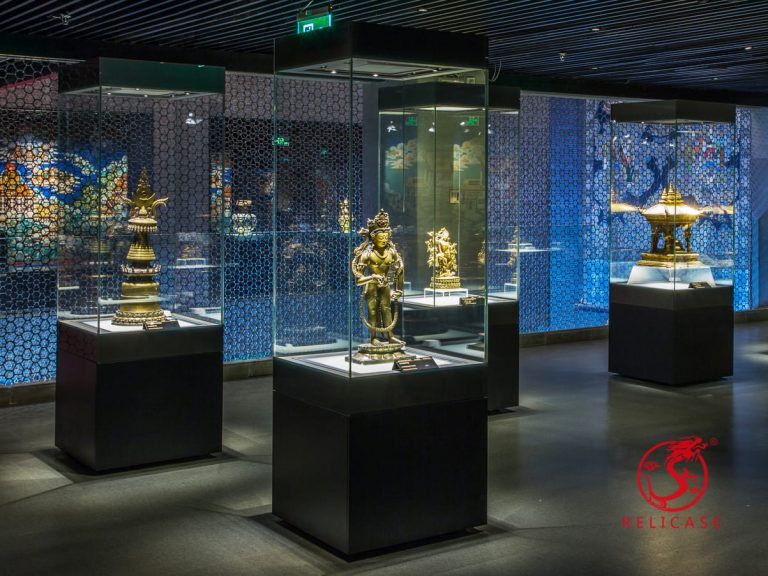
Potala Palace
Abstract On April 26, 2017, Relicase completed the showcase project for the Treasure Hall of the Potala Palace in Tibet. The Collections Hall spans three floors and is divided into two major sections, showcasing a total of 273 individual artifacts and replicas, as well as 155 sets of artifacts (or 159 sets, including 147 sets…
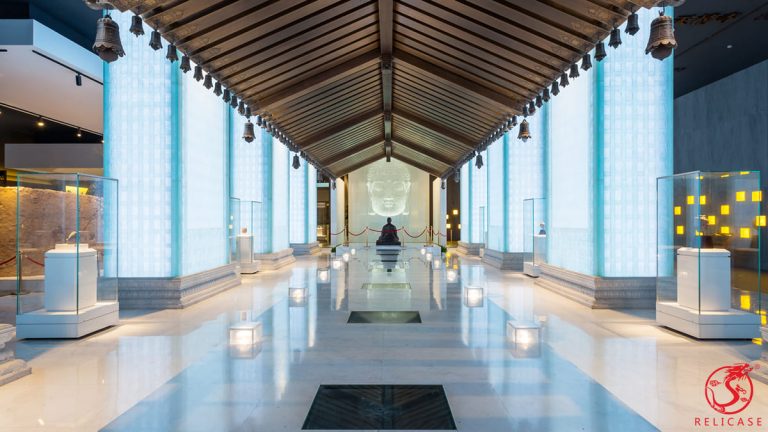
Porcelain Tower of Nanjing
Abstract The Porcelain Tower of Nanjing, named and constructed by Emperor Yongle of the Ming Dynasty to honor his parents’ boundless love and virtue, stands as a symbol of filial piety. Celebrated in Du Mu’s poetic lines, “Four hundred and eighty temples of the Southern Dynasties, how many pavilions linger in the mist and rain,”…
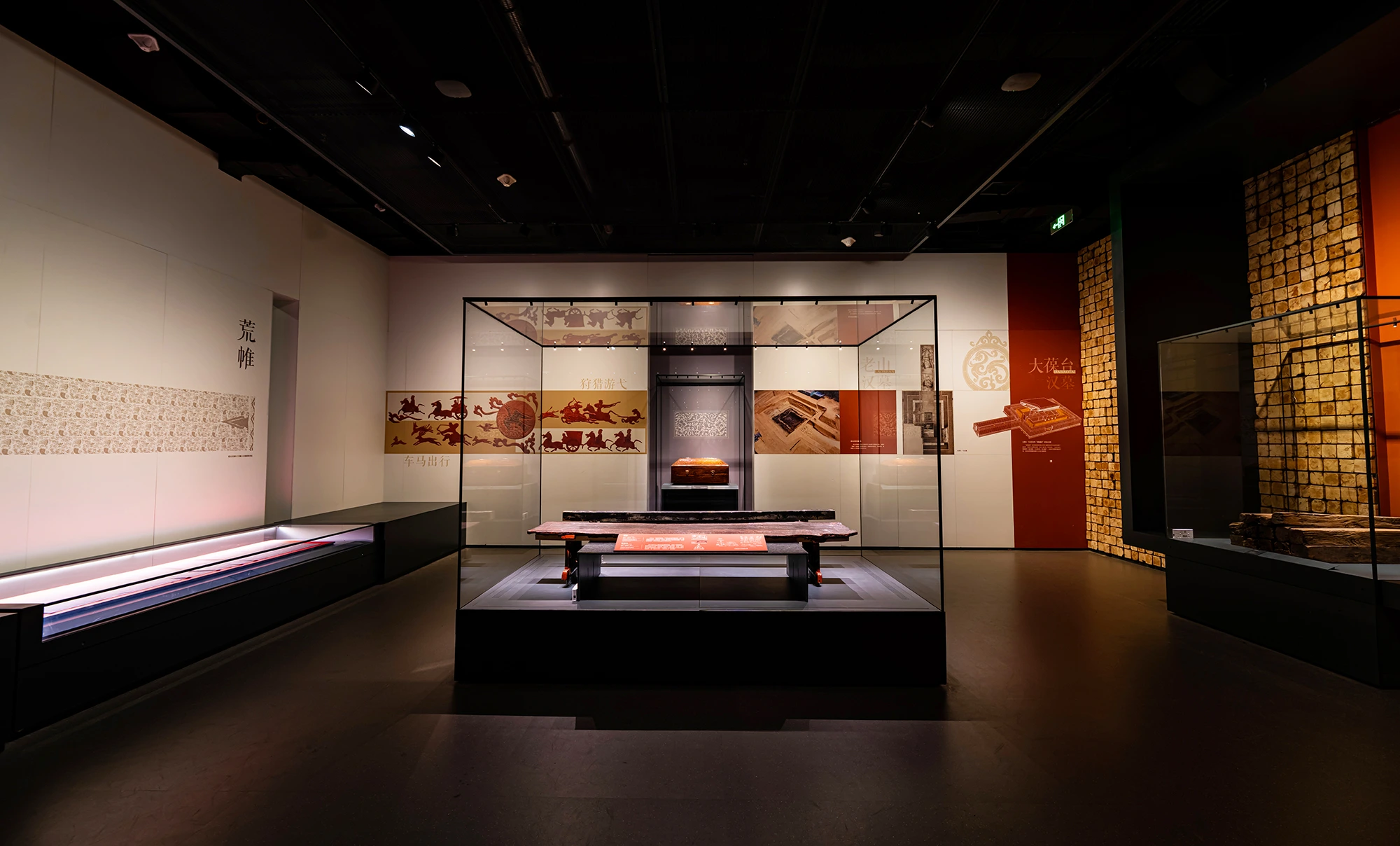
The basic guide to Museum Showcase Glass
As museums continue to modernize, the glass used in display cases has undergone a remarkable transformation to meet ever-evolving requirements for safety, visibility, and artifact preservation. The shift from basic transparent materials to specialized, high-performance glass highlights the strides made in exhibition technology. The Journey of Museum Showcase Glass Historically, glass in museum showcases was…
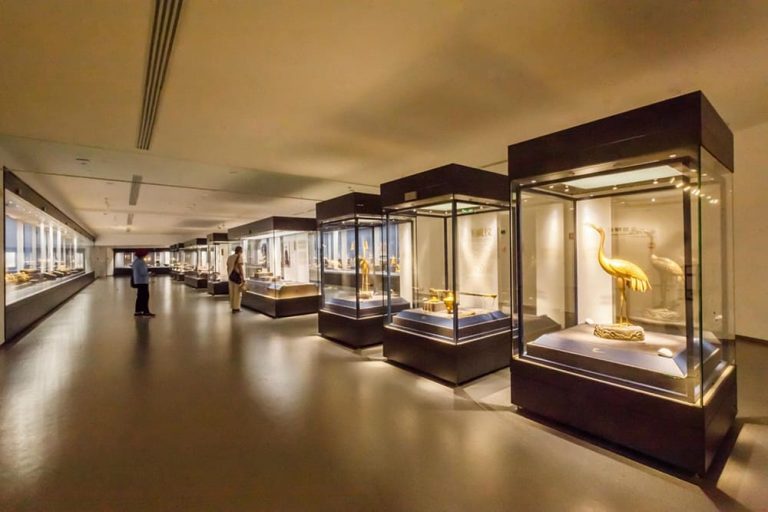
How to Design Lighting for Museum Display Cases
Museum display cases are freestanding, touchable structures. To comply with engineering safety standards, the lighting inside these cases should operate on low-voltage input. Relicase, in line with national standards, ensures the display cases they manufacture meet the following specifications: 1. Protective or isolating measures must be in place between the lighting fixtures and the display…

Display Case Project Research: French Pavilion Shanghai Expo 2010
Project Introduction Architect: Jacques Ferrier Architectures Scenography Engineering: Scenos-associes Vitrines Design: Scenos-associes Vitrines Fabricate & Installation: Relicase Originally constructed as a train station for the 1900 World Fair, the Musée d’Orsay is situated in Paris on the left bank of the Seine River. It has served as a hotel, auction house, and post office for…
